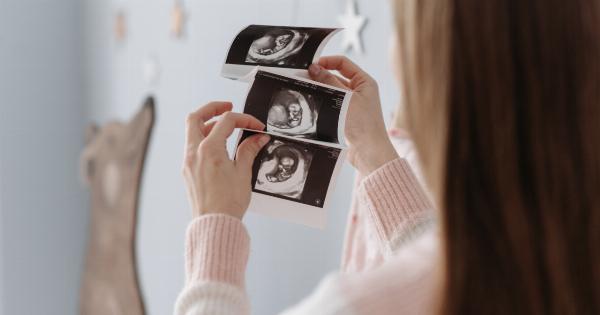One of the most anticipated moments during pregnancy is finding out the gender of the baby.
While there are various methods and old wives’ tales that claim to predict the baby’s gender, ultrasound remains the most reliable and accurate way to determine the sex of the baby. However, it is important to note that the accuracy of ultrasound for gender prediction can vary depending on the stage of pregnancy.
In this article, we will explore when an ultrasound can predict the baby’s gender and factors that may affect its accuracy.
1. Early Ultrasound: 6 to 12 Weeks
During the early stages of pregnancy, specifically between 6 to 12 weeks, ultrasound can be used to detect the baby’s gender.
However, it is important to understand that the accuracy rate during this period is relatively low, with a range of 75% to 90%. The main reason for the lower accuracy at this stage is the underdevelopment of the baby’s genitalia. It can be challenging for the ultrasound technician to accurately determine the gender due to the small size and lack of distinct features.
2. Nub Theory: 12 to 14 Weeks
The nub theory is a method used around 12 to 14 weeks of pregnancy to predict the baby’s gender through ultrasound.
This theory suggests that the angle of the genital tubercle, which appears as a nub between the legs, can provide clues about the baby’s sex. If the nub points upward at an angle greater than 30 degrees, it is more likely to be a boy, whereas if it points more horizontally, it is more likely to be a girl.
However, it is important to note that the nub theory is not yet scientifically proven and should be taken with caution.
3. Second Trimester: 18 to 26 Weeks
The second trimester, specifically between 18 to 26 weeks, is considered the best time for ultrasound gender prediction. This is because by this stage, the baby’s genitalia have developed enough to be clearly visible on the ultrasound scan.
The accuracy rate during this period is significantly higher, ranging from 95% to 99%. Ultrasound technicians can look for the presence or absence of the male genitalia, known as the “turtle sign” or the “hamburger sign” for boys and girls, respectively.
4. Factors Affecting Accuracy
While ultrasound is generally reliable for gender prediction, there are several factors that can affect its accuracy:.
a) Fetal Position
The position of the baby in the womb can sometimes make it difficult for the ultrasound technician to obtain clear and accurate images.
If the baby is in a position where the genitalia are not clearly visible, it may be challenging to determine the baby’s gender.
b) Gestational Age
The accuracy of ultrasound for gender prediction increases as the pregnancy progresses. The earlier the ultrasound is performed, the higher the chance of misinterpretation due to the underdeveloped genitalia.
Therefore, it is recommended to wait until the second trimester for more accurate results.
c) Technician Experience
The experience and expertise of the ultrasound technician can also play a role in the accuracy of gender prediction.
Skilled technicians who are familiar with identifying the baby’s genitalia can provide more reliable results compared to those with less experience.
d) Multiple Pregnancies
In the case of multiple pregnancies, such as twins or triplets, the accuracy of ultrasound for gender prediction may be lower. This is because it can be challenging to distinguish between the genitalia of each baby when they are in close proximity.
e) Equipment and Image Quality
The quality of the ultrasound equipment used and the clarity of the images obtained can also impact the accuracy of gender prediction.
High-resolution ultrasound machines and clear imaging can greatly improve the technician’s ability to identify the baby’s gender.
f) Fetal Positioning and Movement
If the baby is moving excessively during the ultrasound, it can hinder the technician’s ability to capture clear images of the genitalia.
Additionally, if the baby’s legs are crossed or positioned in a way that obscures the genital area, it may be difficult to determine the baby’s gender.
5. Conclusion
Ultrasound is the most reliable method for predicting the baby’s gender during pregnancy. While early ultrasounds may provide some insight, it is generally recommended to wait until the second trimester for more accurate results.
Factors such as fetal position, gestational age, technician experience, multiple pregnancies, equipment, and fetal movement can affect the accuracy of gender prediction. Consulting with a healthcare professional and experienced ultrasound technician can help ensure the most accurate results.





























